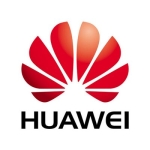What is our primary use case?
I use the solution in my company for mission-critical core banking applications.
What is most valuable?
If you ask me, technically, the tool is the same as most of the vendors have the same thing. If you ask me about Huawei, I can tell you about the tool's many features.
Dell PowerMax NVMe's advantage is just the support.
What needs improvement?
The tool's disadvantages are its cost and lack of ease of use. According to the latest market trends, certain technologies are lacking.
The main challenge with the product was to have control over the simultaneous failures of controllers. For recovery, manual intervention is required.
The tool's cost, active controller part, installation, maintenance, scalability, and recovery parts can be considered for improvement.
For how long have I used the solution?
I have been using Google Cloud for five years. I have a Dell PowerMax NVMe 8000 and a Dell PowerMax NVMe 8500. I was a partner integrator with Dell. I have twenty-four years of storage experience.
What do I think about the stability of the solution?
It is a very stable solution. Stability-wise, I rate the solution an eight out of ten.
What do I think about the scalability of the solution?
It is not a very scalable solution. Other vendors offer much more scalability options than Dell PowerMax NVMe.
There is something called transfer of ownership known as LUN tagging, but other boxes don't offer such a feature.
Scalability-wise, I rate the solution a seven out of ten.
How are customer service and support?
The solution's technical support was good, and it is one of the tool's main advantages. I rate the technical support a nine out of ten.
How would you rate customer service and support?
Which solution did I use previously and why did I switch?
I am also a solution architect for Huawei.
We are talking with one of our vendors and customers, who were keen to get involved with OPSWAT. With most vendors, whenever there is an NFS and compliant storage, all the products offer support. I just wanted to understand why only a few products are listed in Google's support portal.
I have been using Huawei for almost seven and a half years now. Prior to that, I was a business partner of HP and Oracle. I was Dell's partner for almost ten years. Before that, I was IBM's partner for five and a half years.
How was the initial setup?
The product's initial setup phase is okay. If you compare Dell's setup phase, Huawei is convenient and easy to install.
For Dell's installation phase, around two people are required. For Huawei's installation phase, one person is required. Huawei's installation can be managed remotely. I am a solution architect, so I don't do the deployments now.
What was our ROI?
There is no ROI. I have seen the tool used, and pretty much all the vendors are the same.
What's my experience with pricing, setup cost, and licensing?
The tool is very expensive. I rate the tool's price as a one out of ten.
What other advice do I have?
We are talking with one of our vendors and customers, who were keen to get involved with OPSWAT. With most vendors, whenever there is an NFS and compliant storage, all the products offer support. I just wanted to understand why only a few products are listed in Google's support portal.
The tool has a fully symmetric architecture, so it offers an active controller there. Controller failure is not something that we can withstand, especially if there are two simultaneous controller failures. With the other vendors right now, considering what we are working for, tools can support up to seven controller failures, which is so for any banking operations.
I don't know how the tool's real-time machine-learning capability has impacted our company.
The maintenance of Dell PowerMax NVMe requires companies to have resources along with extensive technology experience. It is the same for any vendor.
I have not really seen any AI features in the tool.
For the technical specifications, I can rate the tool as a seven out of ten.
I rate the overall tool as a seven out of ten.
Disclosure: My company has a business relationship with this vendor other than being a customer. Integrator














